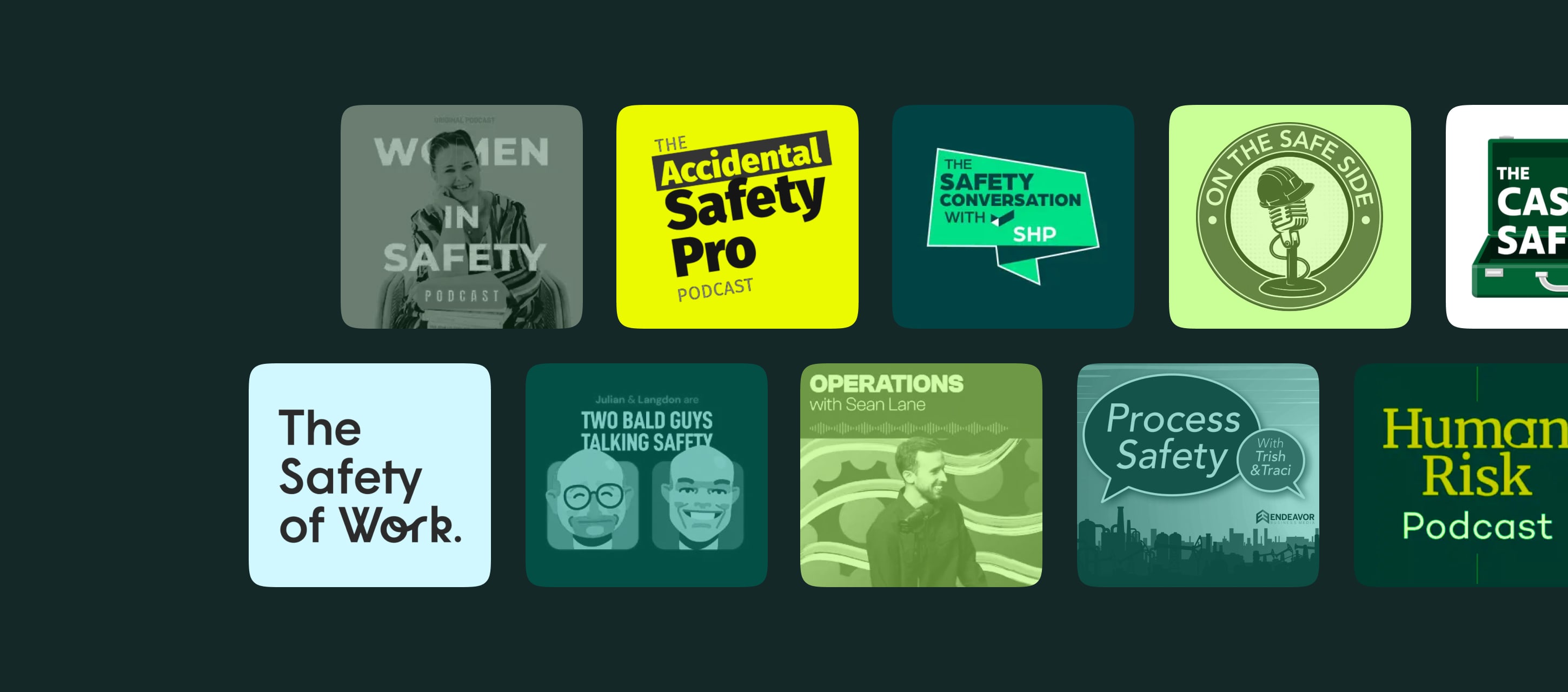With increasing complexity of field operations and arising regulatory demands, ensuring safety is becoming more crucial than ever. Businesses from high-risk sectors like construction, energy and aviation, are prioritizing HSE policies to protect their employees and their reputation.
In this guide, we’ll explain what an SMS is, why it’s crucial, and how solutions like Fluix can help you transform your approach to workplace safety.
Contents:
What Is a Safety Management System?
A Safety Management System (SMS) is a structured framework that helps organizations proactively manage workplace safety and health risks.
It is also known as Occupational Safety Management System (OSMS), Health and Safety Management System (HSMS), Occupational Health and Safety Management System (OHSMS), or Occupational Safety and Health Management System (OSHMS)
Typically, it includes core safety policies, systematic hazard identification, risk assessment, incident investigation, emergency response, and continuous performance evaluation.
The goal of an SMS is to prevent injuries and incidents and ensure regulatory compliance, building a safety culture.
Key Benefits of a Safety Management System
A safety management system provides numerous perks, particularly for field service and highly-regulated businesses. The main ones include:
- Lower operation overheads
- Less risk of injuries and illnesses onsite
- Fewer operational errors (and the reduction of associated costs)
- Compliance with workplace laws
- Maintenance of health and safety related mandates
- Better employee engagement with the business
- Established behavior-based safety
- Diminished insurance premiums
- Elimination of unnecessary legal fees
If you manage to safeguard at least half of them for your business, its performance would grow exponentially.
Components of a Safety Management System
While different regions and regulatory bodies may have varying elements, there exist best practices that form a globally recognized framework. Here are its key components:
1. Policy
- Develops and documents the organization’s safety protocols.
- Ensures endorsement from senior leadership.
- Manages safety communication internally and externally.
2. Organizing
- Assigns clear roles, responsibilities, and accountabilities.
- Establishes a Safety Committee and enables worker participation.
- Ensures competency through targeted safety training, including toolbox talks.
3. Planning and Implementation
- Conducts initial reviews to identify gaps and safety hazards.
- Sets measurable safety objectives aligned with operational risks.
- Implements control measures (engineering, administrative, PPE).
- Integrates emergency planning and contractor safety standards.
4. Evaluation
- Monitors metrics to track safety and conducts workplace inspections.
- Tracks compliance with safety procedures and incident rates.
- Investigates incidents to root out system failures.
5. Action for Improvement
- Initiates corrective and preventive actions based on findings.
- Conducts regular audits and management reviews.
- Drives continual improvement and informs safety documentation updates.
Together, they enable safer, more resilient workplaces and create the foundation for a high-functioning OHSMS.
Safety Management System Example
Titan Airways, a UK charter airline, streamlined its SMS by digitizing its flight operations using Fluix, a mobile-first tool for safety management. By shifting to electronic flight bags, Titan enhanced real-time safety communication.“When we have a last-minute charter to a complex region, our Flight Operations department can get important airfield briefs uploaded into Fluix, so the pilots receive critical safety information immediately,” explains Andrew Taggart, Line Training Captain.
This proactive approach not only ensures compliance with aviation safety regulations but also supports faster, more informed decision-making for crews. Read more about their other tactics here.
How to Create and Implement an SMS at Your Site
Creating an SMS is a significant undertaking that requires a step-by-step approach. Here are the basic steps to follow:
1. Establish a Safety Policy
Develop a clear safety policy that outlines your organization’s commitment to safety. This should be supported by top management and communicated to all employees.
2. Define Roles and Responsibilities
Create safety roles and responsibilities across all levels of the organization. Appointing a safety manager or officer who would oversee the SMS implementation and maintenance would be a good move.
3. Develop a Hazard Identification Process
Conduct inspections and audits to identify potential hazards. Next, evaluate the severity of those you’ve spotted and prioritize risks based on their potential impact.
4. Implement Risk Mitigation Measures
Develop and implement control measures to eliminate or reduce identified risks. This may include engineering controls, administrative controls, and personal protective equipment (PPE).
5. Establish Safety Performance Monitoring
Implement key performance indicators (KPIs) to monitor safety performance. Using data to track incident rates, near-misses, and compliance will help you make better decisions later.
Regularly audit safety practices and procedures to ensure compliance and identify areas for improvement.
6. Foster a Safety Culture
To improve workplace safety, provide continuous safety training and education programs for all employees. Ensure they cover hazard recognition, safe work practices, and emergency procedures.
7. Utilize Digital Solutions
Digital solutions like Fluix can make safety management more efficient through many ways – from centralizing documentation to enabling real-time hazard identification to streamlining incident reporting.
To make the best use of them, make sure you train your teams on the usage and invest time in proper onboarding.
Read More: How Dyna Crane uses digital audit checklists in Fluix to improve their safety management
Improving Your Safety Management with Fluix
Fluix is a mobile-first platform that offers businesses of all sizes powerful tools to improve the accuracy and effectiveness of their safety management systems:
- Centralized documentation: Fluix allows you to manage all your safety-related documents in one centralized platform, ensuring everyone has access to the most up-to-date information.
- Mobile inspections: Your safety personnel can use Fluix’s mobile app to conduct real-time safety inspections and audits. This allows them to identify and report hazards on the spot, ensuring timely mitigation.
- Incident reporting: Digital forms that can be filled out and submitted from any location, and incidents are documented accurately and promptly.
- Task assignments: You can automatically assign tasks to the relevant people when hazards are identified or incidents occur. This ensures they are addressed promptly and efficiently.
- Training management: Fluix enables you to manage all steps of the employee training programs, from material distribution to assignment completion to certificate tracking.
- Dashboards and reports: You can use Fluix’s dashboards to get real-time insights into your safety performance metrics. Analyze data to identify trends, areas of improvement, and measure the effectiveness of your safety initiatives.
Other Fluix’s features include compliance management, audit trails and custom integrations that altogether help you create a safer working environment, without adding more complexity (or paperwork) to your operations.
Implementing Fluix can transform your SMS into a dynamic, proactive, and responsive system that adapts to the ever-changing safety landscape.






